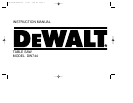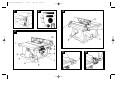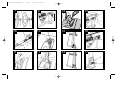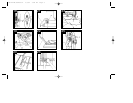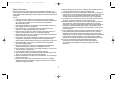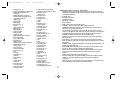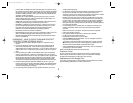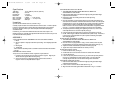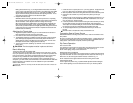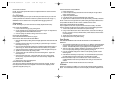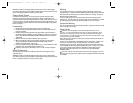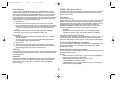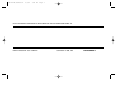
7
feed direction. During kickback, the workpiece could be thrown back at the operator. It
can also drag the operator’s hand back into the blade if the operator’s hand is at the
rear of the blade. If kickback occurs, turn the saw OFF and verify the proper
functioning of the splitter, anti-kickback teeth and guards before resuming work.
CAUTION:
1. Always use the guard and make certain it is in good working order. The guard’s
splitter helps prevent binding and the anti-kickback teeth on each side of the
splitter minimise the possibility of kickback. Use extra caution until the workpiece
is through the splitter and has engaged anti-kickback teeth.
2. Do not saw warped, bowed or cupped wood. The workpiece must have one
straight, smooth side to go against the rip fence or mitre gauge. The workpiece
must sit flat on the table without rocking.
3. Do not cut “free hand”. Always use either the rip fence or the mitre gauge. Never
use both.
4. Use extra care when the guard assembly cannot be used (during dadoing or
moulding).
5. Support large workpieces carefully. Allowing them to sag or droop can cause
kickback.
Operation
Plain sawing includes ripping and cross cutting, plus a few other standard operations of
fundamental nature. The following methods feature safety. As with all power tools
respecting the tool, using caution and following safe practices will considerably lessen
the possibility of personal injury. However, if normal safety precautions are overlooked
or completely ignored, personal injury to the operator can result. Read and follow all
warnings indicated on the saw. Through sawing is any operation which renders the
material into two separate pieces. Observe the safety rules included in this manual.
THIS SAW IS NOT INTENDED FOR CUTTING METAL.
Operating Instructions
There are two basic types of cuts: ripping and crosscutting. In general, cutting with the
grain is ripping and across the grain is crosscutting. However, with man made
materials this distinction is somewhat difficult to make. Therefore, cutting a piece of
wood to a different width is ripping and cutting across the short dimension is
crosscutting. Neither ripping or crosscutting may be done safely freehand! Ripping
requires the use of the rip fence and crosscutting uses the mitre gauge.
CAUTION: Before using the saw each and every time verify the following:
1. Blade is tight.
2. Bevel angle lock knob is tight.
3. If ripping, ensure rail lock lever is tight and fence is parallel to the blade.
4. If crosscutting, mitre gauge lever is tight.
5. Guard is in place and working properly.
6. Safety glasses are being worn.
7. The blade guard is properly attached and the anti-kickback teeth are functioning.
Failure to adhere to these common safety rules can greatly increase the likelihood
of injury.
Ripping
1. Lock the rip fence by pressing the rail lock lever down. Remove the mitre gauge.
2. Raise the blade so it is about 1/8” (3.2 mm) higher than the top of the workpiece.
3. Hold the workpiece flat on the table and against the fence. Keep the workpiece
about 1” (25.4 mm) away from the blade.
CAUTION: The workpiece must have a straight edge against he fence and
must not be warped, twisted or bowed. Keep both hands away from the blade
and away from the path of the blade.
4. Turn the saw on and allow the blade to come up to speed. Both hands can be
used in starting the cut. When there is approximately twelve (12) inches (305
mm) left to be ripped use only one hand, with your thumb pushing the material,
your index and second finger holding the material down and your other fingers
hooked over the fence. Always keep your thumb along side your first two fingers
and near the fence.
5. Keeping the workpiece against the table and fence, slowly feed the workpiece
rearward all the way through the saw blade. Continue pushing the workpiece
until it is clear of the guard and it falls off the rear of the table. Do not overload the
motor.
6. Never try to pull the workpiece back with the blade turning. Turn the switch off,
allow the blade to stop, raise the anti-kickback teeth on each side of the splitter if
necessary and slide the workpiece out.
7. When sawing a long piece of material or a panel, always use a work support. A
sawhorse, rollers, or out feed assembly provides adequate support for this
purpose. The work support must be at the same height as the saw table.
CAUTION: Never push or hold onto the “free” or “cut off” side of the workpiece.
Bevel Ripping
This operation is the same as ripping except the bevel angle is set to an angle other
than zero (0) degrees.
DW744-XE/387486-01 5/1/02 3:44 PM Page 11



